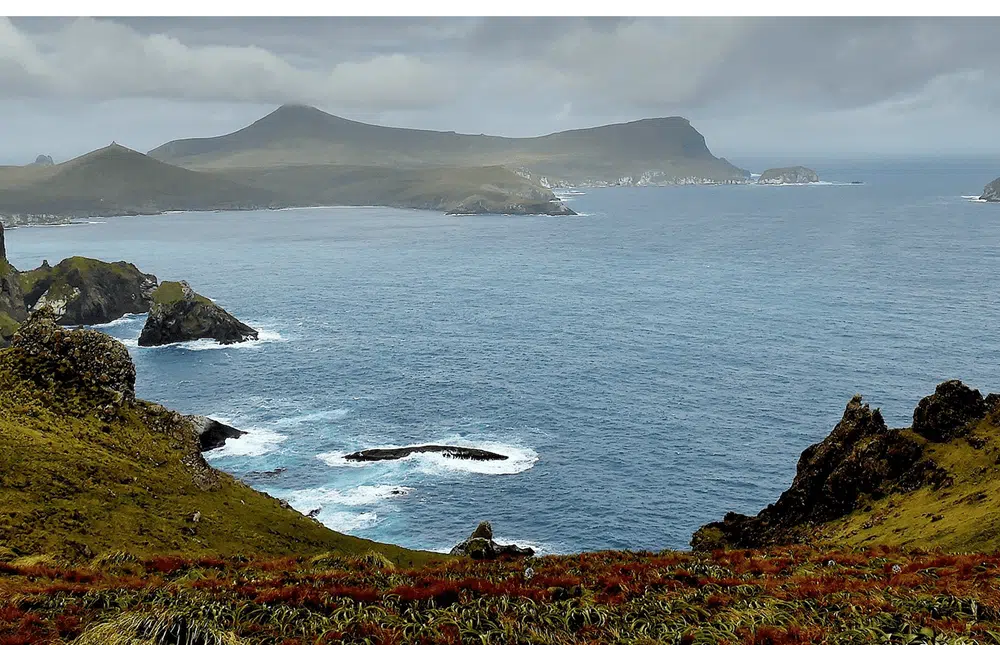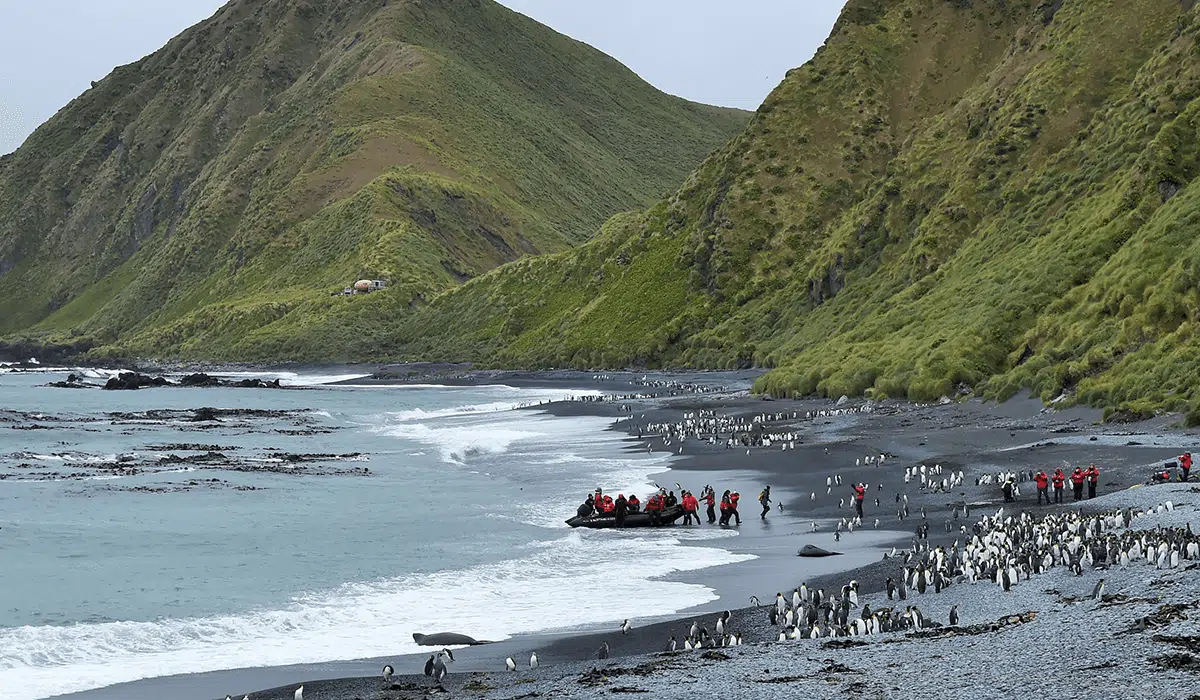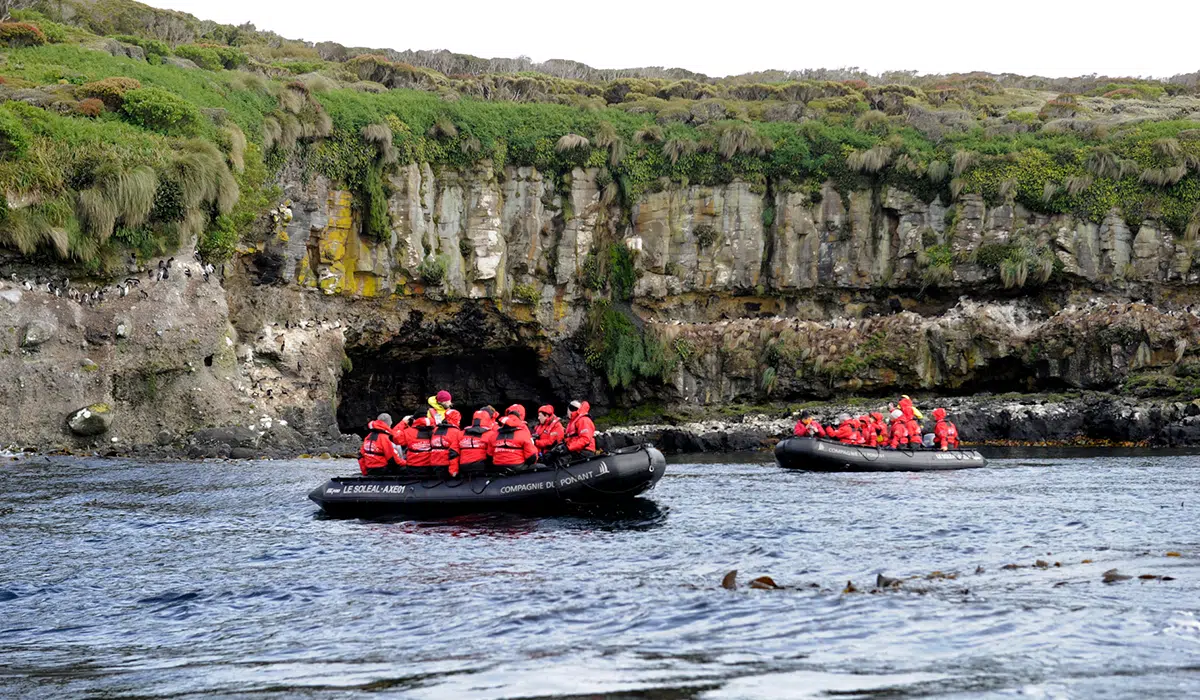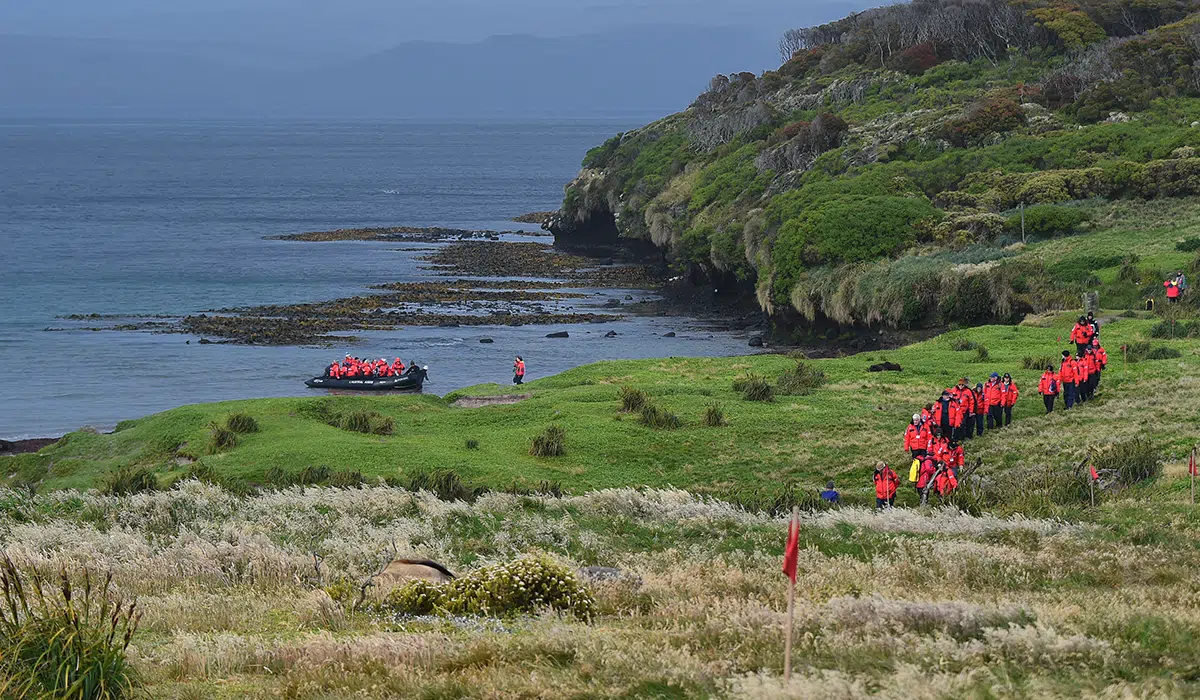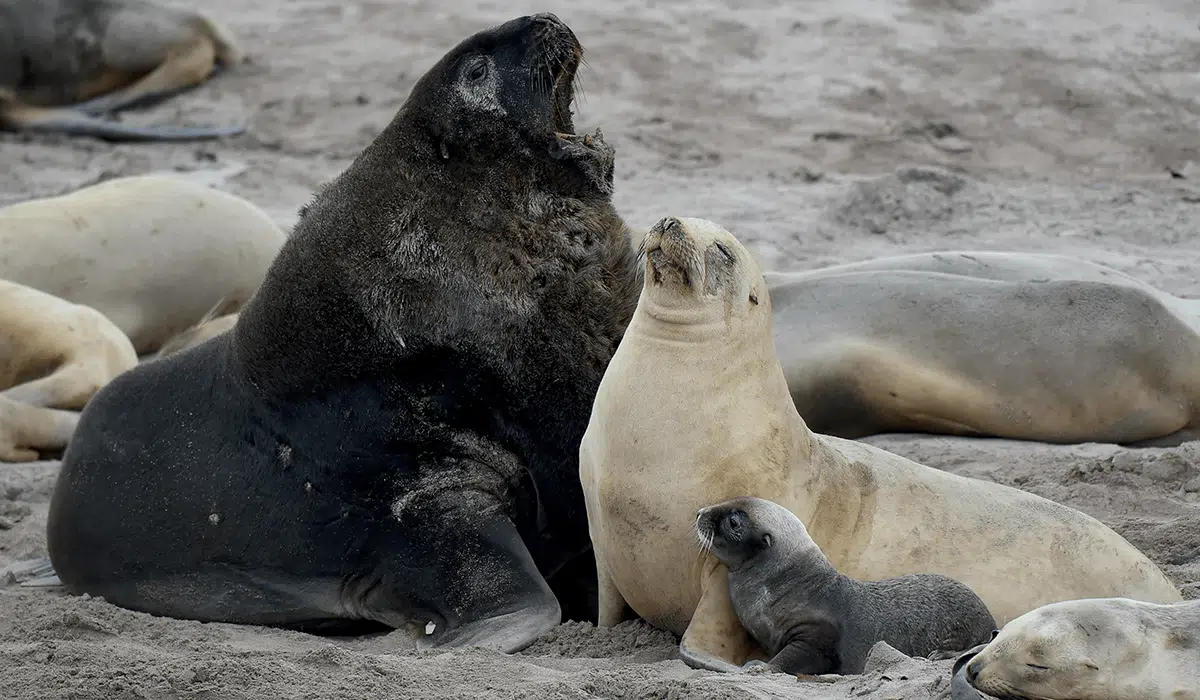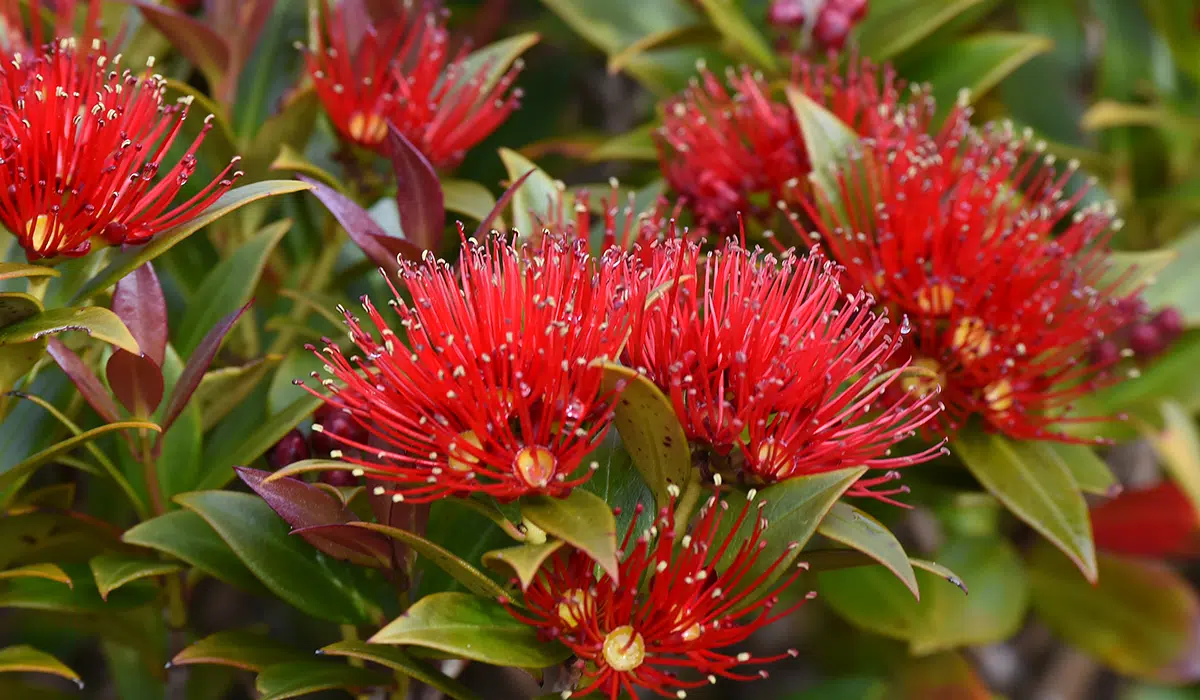Sandrine Erwin-Rose introduces us to these remarkable wild and secret islands
The Subantarctic Islands of Australia and New Zealand, located in the Southern Ocean are remote, rugged, wild and beautiful places, and are home to some of the most abundant and unique flora and fauna found on earth. Sandrine Erwin-Rose, Expedition Operations Manager for PONANT Asia Pacific, gives us an overview of the islands, what makes them so special and discusses some of the endemic species that can be found on them.

What makes the Subantarctic Islands of Australia and New Zealand so unique?
The Subantarctic Islands consist of five island groups (the Snares, Bounty, Antipodes, Auckland and Campbell Islands) belonging to New Zealand plus Australia’s Macquarie Island. Situated in the Southern Ocean between 47° and 54° South, in the ‘Roaring Forties’ and ‘Furious Fifties’ air currents and lying between the Antarctic and Subtropical convergences, they range in size from the smallest, the Bounty Islands at 135 ha to the largest, Auckland Island at 53,000 ha. Essentially tiny specks of land in the ocean between New Zealand and Antarctica, they are a refuge for numerous species of flora and fauna, with many found nowhere else. Several small islands in the Snares and Auckland groups have essentially had no human interference at all and are in pristine condition, some of the few places on earth which are literally untouched by humans. Their isolation has resulted in several species evolving independently, making them a fascinating study of island biogeography for scientists, similar to the Galapagos Islands. Macquarie Island also has the unique geological feature of being the only place in the world where rocks from the earth’s mantle (the molten rock 6 km below the ocean floor) are exposed above sea level.
What endemic wildlife can be found in the Subantarctics?
These islands are of particular interest to biologists and wildlife enthusiasts alike due to the large number of endemic species found there. When visiting these islands, it is exciting and humbling, to know that many of the plants and animals you see are found nowhere else on earth.
Birds such as cormorants (shags) and teals (a subgroup of small ducks), due to their limited or non-existent flying ability, have evolved independently. The Bounty Island Shag, for example, is only found on the small, exposed rocky islands which make up the Bounty Islands and with only 500-600 individuals, it is the world’s rarest cormorant.
The Auckland Island group is the largest of these Subantarctic islands and although only a third of the size of Greater London, it is home to numerous species of endemic birds such as the Auckland Island Shag, Auckland Island Teal, Auckland Rail and the Tomtit as well as seven other species of land birds. The world’s rarest penguin, the Yellow-eyed penguin (Hoiho), has a significant proportion of its breeding population on Enderby Island (the northern part of the Auckland Island group) and most of the world’s population of the White-capped Mollymawk also breed here on nearby Disappointment Island.
The Auckland Islands are also the primary breeding location for the New Zealand Sea Lion (Rapoka/Whakahao), one of the rarest sea lion species in the world. Although the sea lions will haul-out on beaches from Macquarie Island to New Zealand’s South Island, breeding is predominantly restricted to the Subantarctic Islands. The current population is estimated at approximately 12,000 with the Auckland Islands’ breeding grounds making up around 68% of the entire population. Two other breeding colonies representing around 30% of the population can also be found on the ‘relatively’ nearby Campbell Island.
Campbell Island is the southern-most of the New Zealand Subantarctic Islands, lying 700 km south of New Zealand’s South Island, it is considered a major world centre of albatross diversity being home to six species of albatross. These include the Black-browed Albatross, Grey-headed Albatross, Light-mantled Sooty, Gibson’s Wandering Albatross and the Campbell Mollymawk, which breeds nowhere else. One of the great albatross species, the Southern Royal Albatross also breeds on Campbell Island, with 99% of the 8,500 pairs that makes up the world population, found here.
These islands are also home to some less glamorous, yet just as important birds such as the small, flightless Campbell Island Teal (Anas nesiotis). This bird was believed to have become extinct, however in 1973 a tiny population was found on Dent Island, a small islet near Campbell Island. Eleven birds were removed and successfully bred in captivity and subsequently re-introduced to Campbell Island between 2004 and 2006 to recolonise their former home after a 200-year absence. They are secretive birds with excellent camouflage abilities making population estimates difficult, but the most recent population count in 2009, estimates there were around 102 birds on the island. In 1997, during a search for the Campbell Island Teal by scientists on nearby Jacquemart Island, the unknown Campbell Island Snipe (Coenocorypha aucklandica perseverance) was discovered. It was the first discovery of an undescribed living bird in New Zealand in 50 years. This small, endemic bird subsequently made its own way to the main Campbell Island after it was declared free of the feral Norway rats in 2001. These two species of birds are truly unique and if lucky enough to see them in their natural environment it is an absolute privilege.
At the mention of penguins one may immediately think of Antarctica, however the Subantarctic Islands of New Zealand and Australia are the breeding sites for a number of species of penguins including the Gentoo, King and Eastern Rockhopper penguins, which many people are familiar with, however the endemic Yellow-eyed, Snare’s Crested, Erect-crested and Royal Penguins people may be less familiar with. The Snare’s Crested penguin nests only on the tiny Snares Islands and the Erect-crested penguins breed only on the tiny Bounty Islands (26,000 pairs) and the Antipodes Islands (42,500 pairs). The curious and incredibly charismatic Royal Penguins only breed on remote Macquarie Island, some two-thousand kilometres south-east of Australia. With an estimated 850,000 pairs the population is considered stable, but more research is needed to find out where the birds go once they leave the island after the breeding season. The Yellow-eyed penguin (Hoiho), is the World’s Rarest Penguin, with two genetically distinct populations – the northern population on New Zealand’s South Island and the southern population on the Auckland and Campbell Islands. The northern population has suffered a 65% decline in the last twenty years and is estimated at only 265 breeding pairs. The Auckland Islands’ population in 2019 was estimated to be 570 breeding pairs, while the last population estimate of 399 breeding pairs at Campbell Island was in 1992 with no recent estimates.
The thrill of seeing animals like those mentioned above, which are endemic to a particular area, is somewhat tempered with the realisation of the fragility of these animals. Natural and man-made threats can potentially tip these already vulnerable species to the brink of extinction. Their protection and ongoing security need to be a priority, because losing these species just does not bear to think about. This makes unique places like the Subantarctic islands so very important to preserve.
We assume with the harsh environment of the Southern Ocean, there would be little plant life on the Subantarctic Islands, so what sort of plants do survive in such a challenging climate and how have they adapted to the harsh conditions?
Plants are amazing with adaptations to not only cope but thrive in the challenging conditions on the Subantarctic Islands. The islands are all windy, cold, damp and receive limited sunshine compared to their more northern counterparts, yet their plant diversity is spectacular ranging from coastal forest to alpine shrublands and grasslands. The islands are home to over 250 vascular plants, 35 of these endemic and several restricted to only a single island. The most visually spectacular and well-known plants are the Megaherbs. Joseph Hooker the botanist on the 1839-43 Antarctic expedition, which discovered Campbell Island, wrote that the Campbell Island megaherbs were “A floral display second to none outside the tropics”. These plants reach very large sizes and their summer flowers, in all their colourful glory, are simply breathtaking. With names such as Campbell Island Carrot (Anistome latifolia), Ross Lily (Bulbinella rossii), Giant Emperor Daisy (Pleurophyllum speciosum) and Macquarie Island Cabbage (Stilbocarpa polaris) conjures up images we associate with more familiar plants, however the names are where the similarities end. These spectacular plants with large leaves and many with huge, showy flowers can leave you feeling like you have shrunk down to the size of a penguin yourself. The adaptation of large, corrugated leaves makes for increased surface area to maximise the absorption of sunlight, brightly coloured flowers to absorb more heat and the rosette arrangement of leaves and a layer of hairs, to trap the warmth, allows for faster growth and seed development. Some of these plants have even been measured with a temperature up to fifteen degrees warmer than their cold surroundings! Grasses are also important for penguins and albatross which use these to build their nests and shelter their chicks. Forests such as the spectacular Southern Rata with its flowers forming a crimson canopy rolling over the hills of the Auckland Islands makes for a stark, almost warming contrast to the blue and grey of the Southern Ocean.
When visiting the Subantarctic Islands, it is impossible to not fall in love with the charismatic wildlife and the spectacular scenery. Whether it be the smallest, fragile gentian flower growing on the side of the path, the comical antics of the Royal penguins, the mesmerising mating dance of a pair of Southern Royal Albatross or the tapestry of plants sculpted by the unrelenting winds of the Southern Ocean, every moment will be a precious memory – until you return again, for one visit is never enough!
Get to know Sandrine
Working with PONANT since they first started sailing the Asia Pacific region nearly six years ago, Sandrine’s favourite part of her role as Expedition Operations Manager for PONANT Asia Pacific is working as an Expedition Leader on board PONANT’s ships. Born in Corsica and immigrating to Australia as a young child, Sandrine later studied and gained an Honours Degree in Tropical Zoology, Ecology and Marine Biology followed by an Education degree. Given her education, it comes as no surprise that Sandrine’s passion is wildlife conservation and the protection of the natural environment. Like many, Sandrine has been bitten by the ‘polar bug’ and can always hear the call of the Southern Ocean, which makes the Subantarctics one of her favourite destinations that she visits with PONANT.
Photo credits: ©Sandrine Erwin-Rose, ©Nathalie Michel, ©Margot Sib

The importance of Albatross Conservation
Home to many types of albatross, the Subantarctic Islands are an important site for the conservation of this majestic bird species – Sandrine tells us why.

